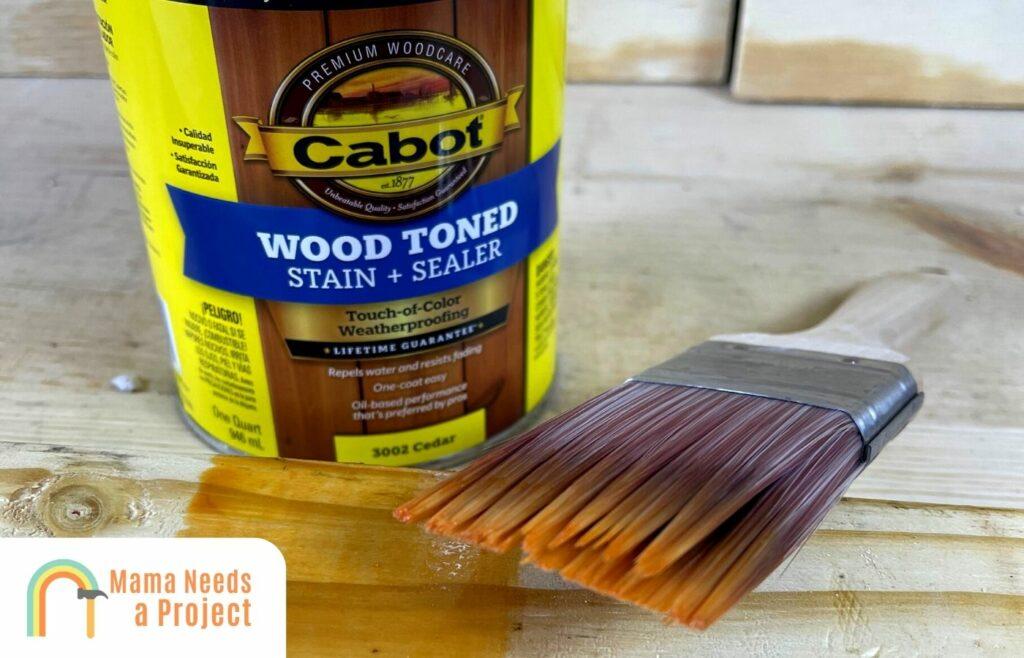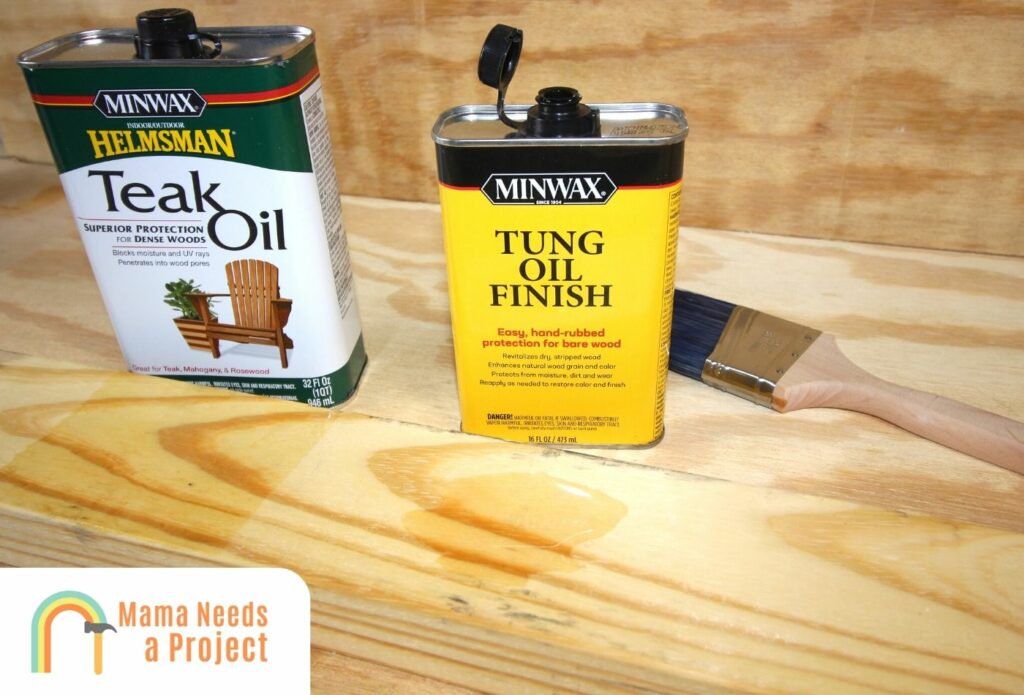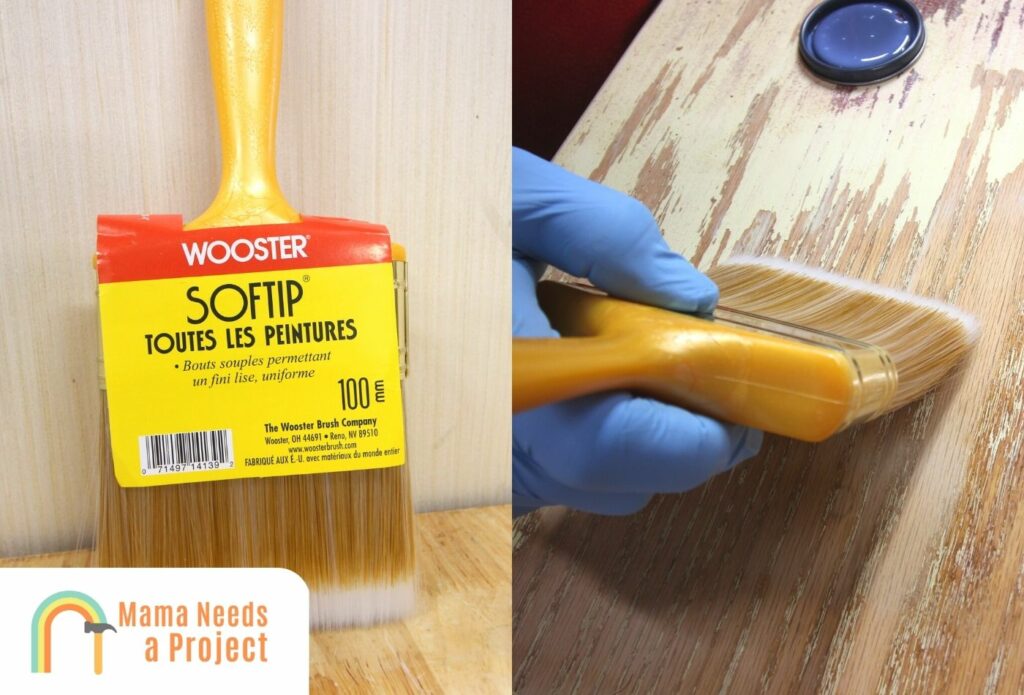Wood can be one of the best materials you can use for maximum structural integrity and an amazing finish.
But there’s one downside.
You are watching: How to Treat Wood for Outdoor Use (Best Methods in 2023!)
If you use untreated wood outdoors, it will become damaged and lose it’s strength. That’s why treating wood is so important whether you’re building wood furniture, installing a new deck, or working on other outdoor projects.
In this post, I’ll explore how to treat wood for outdoor use, how to treat wood for outdoor use naturally, some tips and tricks to treating wood, and much more. Let’s dig in!
How to Treat Wood with Wood Sealer

Wood sealer is my top choice for treating wood so you can use it outdoors. It’s pretty inexpensive, it’s durable, and versatile. What more could you want?
There are two main types of wood sealers, oil based sealant and water based sealant. For outdoor wood, I’d recommend an oil based finish because it tends to be more durable and can hold up against the elements.
You can also find stain sealer products that combine the appearance of a stain with the protection that a sealer provides. These are perfect for exterior wood if you want to add water and UV protection to your wood surface.
The added benefit of using a wood stain and sealer is that it can also hide any imperfections in the surface of the wood because of its color.
Some exterior paint can also be marketed and used as a sealant.
Applying wood sealer is also super easy. Just follow the steps below.
- Clean the surface of your wood. You can use a rag to remove any dust or debris.
- Lightly sand the surface. Depending on your project, you might want to use a belt sander or orbital sander so you can work faster. You can use a medium or fine grit sandpaper on the wood’s surface.
- Remove sanding dust with a rag.
- Apply wood sealer with a brush. Be sure to coat the surface evenly and try to avoid streaking when applying it.
- Allow the wood time to dry. Once you’ve applied the sealant, giving it proper time to dry is essential. It can take many wood sealers over 24 hours to dry completely. The exact drying time will depend on the product you’re using – so check the instruction label to ensure accuracy.
- Repeat for a more durable finish. Applying several coats of your wood sealer can give you even more protection and provide a waterproof surface for your exterior wood. I recommend at minimum two coats. Some people will apply as many as four or five.
If you’re sealing a softer wood, you’ll notice how fast the sealer absorbs into the wood. If you want the best protection, add a few layers. Check out the video below for more info!
How to Treat Wood with Varnish
Varnish is slightly different than wood sealer in that instead of being absorbed into the wood, it sits on top to create an impermeable waterproof finish.
Varnish is more similar to a polyurethane based sealer in that it can also yield different sheens just like polyurethane based coatings. For example, you can purchase glossy, satin, or matte varnishes – depending on how you want your project to look.
Varnish is great option to treat untreated wood for outdoor use because it’s relatively cheap and provides superior protection for your wood. It can also last longer than some other sealants, which is something we all want.
The only downside is that you’ll lose the texture and feel of your wood because of the finish.
How you apply a varnish on untreated wood is similar to using a wood sealer. Just follow these steps!
- Clean the surface of your wood to ensure there is no standing dust or debris.
- Lightly sand the surface. You can use a fine sandpaper for better adhesion.
- Remove dust from sanding with a clean rag.
- Apply varnish with a brush. Try to apply the sealer evenly with a brush. Because of how it hardens, it can be noticeable if you don’t apply it evenly.
- Allow the sealant time to dry. It’s critical to allow your varnish time to completely dry before adding another coat or applying pressure to the surface. Varnish can take a few hours to dry.
- Repeat for a more durable finish.
- Clean up the area. You can use mineral spirits to remove excess varnish.
How to Treat Wood with an Oil Finish
Read more : The World’s Largest Outdoor Cocktail Party is a bucket list event
Another method to protect wood is by using wood oils. These oils can treat untreated wood to add a layer of protection against the elements so you can use it outside.
Wood oils are a more traditional form of treating outdoor wood that have been used for centuries.

Some of the most common options include linseed oil, teak oil, tung oil, or a combination of both known as danish oil.
These finishing oils are natural sealants derived from plants that don’t involve harsh chemicals. In addition to their natural composition, wood oils can also leave behind a nice light colored wood finish.
It’s not as protective as a varnish finish is, but it’s definitely better than nothing!
Here’s how you can apply wood oil to your wood.
- Clean the surface of your wood with a rag.
- Sand the surface lightly.
- Apply wood oil with a natural bristle paintbrush. The soft bristles will help to avoid streaking – which is important when using oil finishes. It there is excess oil, you can wipe is away with rag.
- Let the oil soak and dry. Oil finishes like linseed oil or tung oil will soak into the wood fibers to create a watertight coating. It can take over 24 hours for some oil finishes to dry.
- Repeat for a more durable finish.
Treating Wood with a Pressure Treatment
Pressure treating is the most commercial way of sealing wood, and you likely won’t be able to do this yourself at home.
This process involves heat and preservatives that are pressed into your wood through intense pressure.
It’s easy to tell wood that has been pressure treated because it can feel damp and it has a darker color when compared to untreated wood.
Which Method Should I Use?
The differences between the different treating methods are small which can make it challenging to know when you should use each one.
Ultimately, it’s hard to go wrong with any of them. Wether you’re treating outdoor wooden furniture, decks, or another surface – these finishes are all great options.
That said, if you want to change the appearance of your wood, using a varnish makes sense because it creates a layer on top of the wood that can give it a unique sheen.
If you’re working on a project that requires maximum protection, I’d again recommend using a varnish because of the waterproof seal it creates on top of the surfaces.
Varnish can also be useful when treating softer wood because it is not absorbed into it (which can require much more of your sealant).
If you’re looking for a more natural look, using a wood sealer or oil is a better choice.
Finally, for decking or other walking surfaces – avoid using a varnish as it can cause safety hazards because of how slick it can become when wet.
Tips and Tricks to Treating Exterior Wood
Check the Weather Before Starting
I can’t tell you how important this step is. If you’re going to treat your wood, you need to be sure there is no rain in the forecast before starting.
Read more : Outdoor Mobility Scooters
If there is excess moisture, it can ruin your project and you’ll have to start over. If you’re staining your deck, check out these best times to start staining!
Get the Right Equipment

Having the right brushes for applying your wood sealers can be very helpful. If you want to avoid streaking on your project, it’s all about having the right brush and using the correct technique when applying your product.
This is my favorite brush for applying sealants.
Apply Multiple Coats
Outdoor wood must withstand the elements day in and day out. While a little rain here and there might not seem like a big deal, it can destroy natural wood faster than you think. When using wood sealers, applying multiple coats will give you a more permanent and durable finish that can last for years.
Benefits of Treated Wood
Greater Protection
The most obvious benefit of treated wood compared to untreated wood is the additional weather resistance. Not only does it protect against water, but also against UV rays and other weather elements.
If you use a varnish or similar oil based polyurethane coating, you’ll also gain protection against dents, cracks, and other obtrusions in the surface of your wood.
Insect Deterrent
Outdoor wood not only has to deal with the uncertainty of the weather, but also insects and bugs.
Treated wood provides an additional layer of defense against insects that can extend the life of your project.
Fungal Resistance
Another benefit of treated wood is the fungal resistance that sealants provide. Wooden structures can attract fungus that can slowly eat away at the wood until it becomes weak and structurally unsound.
By treat outdoor wood – you can help stave off fungus from wooden decks, furniture, and other surfaces.
Fire Resistance
Some types of wood treatment will make your wood more fire retardant. It’s important to consider which types. You can even purchase fire retardant sealants if this is a big concern for you.
FAQs
What is the best treatment for wood outside?
The best way to treat untreated wood for outdoor use is by applying a wood sealer, varnish, or finishing oil to the surface of the wood.
Can you treat regular wood for outdoor use?
Yes! You can treat untreated wood to make it weather resistant and more durable. You’ll need to purchase a sealant and apply it to the surface before letting the wood dry.
What is the cheapest way to treat wood for outdoor use?
The cheapest way to treat wood for outdoor use is by applying a water based wood sealant. While it won’t provide as much protection as an oil based sealant, it’s often more affordable.
Final Thoughts
If you’re wondering how to seal wood for outdoor use, you have a few options. They will all get the job done, and it’s hard to say that any of them are better than the others.
You can use a wood sealer, varnish, or wood oils to treat untreated wood and protect it against harsh weather. Treating outdoor wood is easier than you think and in many cases can be completed over a short weekend.
If you don’t want to treat wood yourself, you can opt for pressure treated wood or cedar wood that is naturally treated. However, pressure treated wood is more expensive and it can be slightly more difficult to stain.
Source: https://gardencourte.com
Categories: Outdoor


